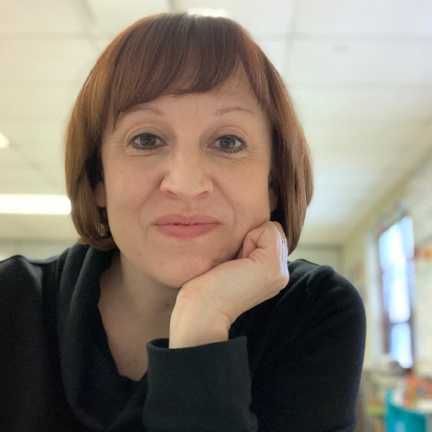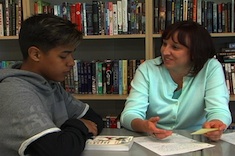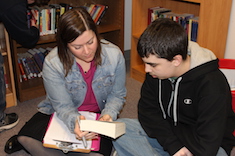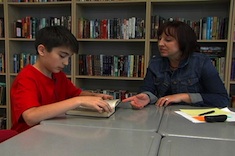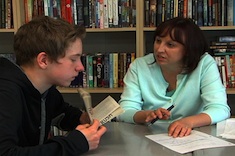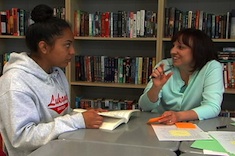In her TED Talk, author Susan Conley tells a story about leading writing workshops for students. She explains that during one of her sessions a particularly intense student asked, “Why are you here? What is in it for you?” Conley volunteers her time to work with student writers. At that moment, she answered by saying something about being a teacher and how much she enjoyed getting to listen to students tell their stories. However, after walking away and thinking about the question, she realized that what truly compels her to do this work is “the magic that might go down.”
Her words resonate with me as a teacher. The magic that might go down.
I bet you can think of some magic that has gone down in your own classroom. If you are anything like me, you can also think of plenty of times when your work was far from anything resembling magic. In fact, I believe I have had entire years of teaching that were far less magical than others. As much as I do not want to admit it, I am beginning to realize the uncomfortable truth that I hold a great deal of power over whether magic goes down in my eighth-grade classroom. Lately, I have been noticing that four intentional moves help create the perfect conditions for the possibility of magic.
Condition 1: Slowing Down
Recently, a friend of mine sent me a book talk podcast she created as an experiment to see if it might be worthwhile to create more. She sent it at a time when I was getting ready to leave for a state reading conference. I was in the midst of planning a presentation, and I had a backlog of grading and paperwork to catch up on plus an email inbox I could barely maintain. I emailed her back a stall tactic and told her I would get back to her with my feedback when I finally got around to listening to it.
I was allowing the business of life to swallow me whole. Although I had myself convinced it was just my world that was affected, I was wrong. If I felt overwhelmed and rushed, you can bet my students felt that tension, too. I ended up frustrated with the results of my instruction. I did not have time to be frustrated, but day after day, students were turning in assignments they seemed to have completed mindlessly, just to get them done. And day after day, I plowed ahead.
Then I went to the conference. I stepped away from the business of life. I breathed. I reflected. I was inspired, and I s l o w e d d o w n. Upon my return to school, the first thing I did was share the book talk podcast with my class. The conference had reminded me of the value of connecting with fellow readers. So, I paused my drive to keep instruction moving forward and took some time to just enjoy listening to a friend talk about a book she had read and loved.
Immediately after listening to the podcast, students were begging to check out the book. The school library copy was immediately back in circulation and in the hands of my hungry students. By slowing down instruction to make room for something lighter, I had created a window of opportunity for students that was more powerful than my own book talk delivery.
Inspiring middle school readers to check out the title shared in the podcast was just the very tip of the magic.
Condition 2: Being Present
After listening to the podcast, one of my most resistant readers, Bryan, announced that he and his friend (another resistant reader) had a podcast. I sensed Bryan might be joking, but I decided to enjoy the moment and play along. “What do you two talk about?”
“Oh, um, everything,” Bryan responded. He added, “We call it ‘Bon’ for Bryan and Don.”
“Do you post it or share it somehow?” I inquired, still playful.
“Yeah, I share it on my Twitter.”
“That’s so cool. Is it appropriate? Could we listen to any of them in class sometime?”
At this point, Don could not take it anymore. He jumped in loudly. “He is lying! We do not have a podcast.”
Bryan did not miss a beat and said, “But we could.”
Don announced his refusal to get involved, and Bryan shrugged it off. “I’m grounded this weekend,” he announced, “so I’m going to read a book and record a podcast of my own to share with the class on Monday.”
That is when shock was added to my amusement. The class watched my response and began encouraging Bryan to follow through. I think they wanted to hear his podcast as much as they wanted to see my surprise if he actually made good on his proclamation.
My presence in the moment allowed me to playfully respond to Bryan’s idea instead of dismissing his nonsense and moving forward with the day’s lesson. My response to Bryan opened the door for him to dream up new possibilities for himself. He went from self-proclaimed nonreader to self-proclaimed book review podcaster in a matter of minutes.
Condition 3: Staying Centered
Years ago at a classroom management workshop for teachers, I saw a triangle graphic like this one:
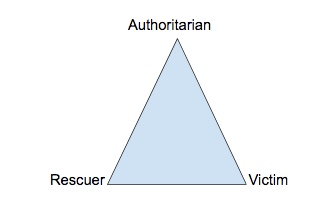
From this visual representation of possible reactions to challenging behavior, I learned the power of staying centered. When a student challenges a teacher, the teacher is most effective at defusing the behavior if she remains centered instead of falling into a role represented by the corners of the triangle, which would automatically push the student into one of the opposing roles. By staying centered, the teacher is most likely to maintain control of the situation and achieve her desired outcome.
I think this triangle graphic rings true for academic instruction as well:
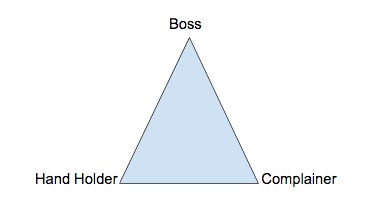
Bryan is reading below grade level. Although he is cognitively capable of reading at grade level, he has been disengaged for so long that he lacks the stamina to read with ease unless the text is at a very low-challenge level for him. If I react to Bryan’s current reading performance by falling into any of the roles at the corners of this triangle, I will not achieve my desired outcome, which is getting Bryan to read comfortably at grade level or beyond.
Much to my delight (and admitted surprise) Bryan followed through with creating a book talk to share with the class. Because he did not know of a Chromebook app to help him record a podcast, he ended up making a video book talk with Screencastify. His video is on the book I Survived Hurricane Katrina, 2005 by Lauren Tarshis, which is far below both Bryan’s grade level (eighth) and reading level.
By staying centered on my ultimate goal for Bryan, I am able to avoid demanding that he read books at a higher level, complaining about his current book choice, or forcing him into an instructional support group that will not address his actual needs, which are grounded in engagement over skills. I am also able to avoid nudging him into one of the opposite roles on the triangle, leaving him free to continue to imagine himself as someone who records book talks to share with others. I will never help Bryan reach a grade-level goal if he does not first identify himself as someone who can.
Condition 4: Sharing Celebrations
When Bryan shared his video with me, I previewed it and set aside time for the class to view it. It was a first, small step in celebrating his accomplishment. It was a first, small step in shifting his identity to that of a reader.
After receiving positive feedback from his language arts classmates, Bryan began sharing the video with other teachers and other classes. He quickly grabbed a copy of the only book he has finished reading this school year and recorded a second video.
I reached out to the friend who had shared the podcast that inspired Bryan’s work, and she requested access to the videos to share with students at her school. I let Bryan know, and asked his permission. He reacted to the request as if his videos had gone viral. There is so much power in being heard.
Sharing his videos with the other school has led to plans to create a series of shared video book talks between schools.
Within the first 30 seconds of his initial video, Bryan declares, “I don’t like to read,” but it is quickly followed up with, “but these types of books I guess I like to read.” That is the kind of magic that goes down if the conditions are just right.


